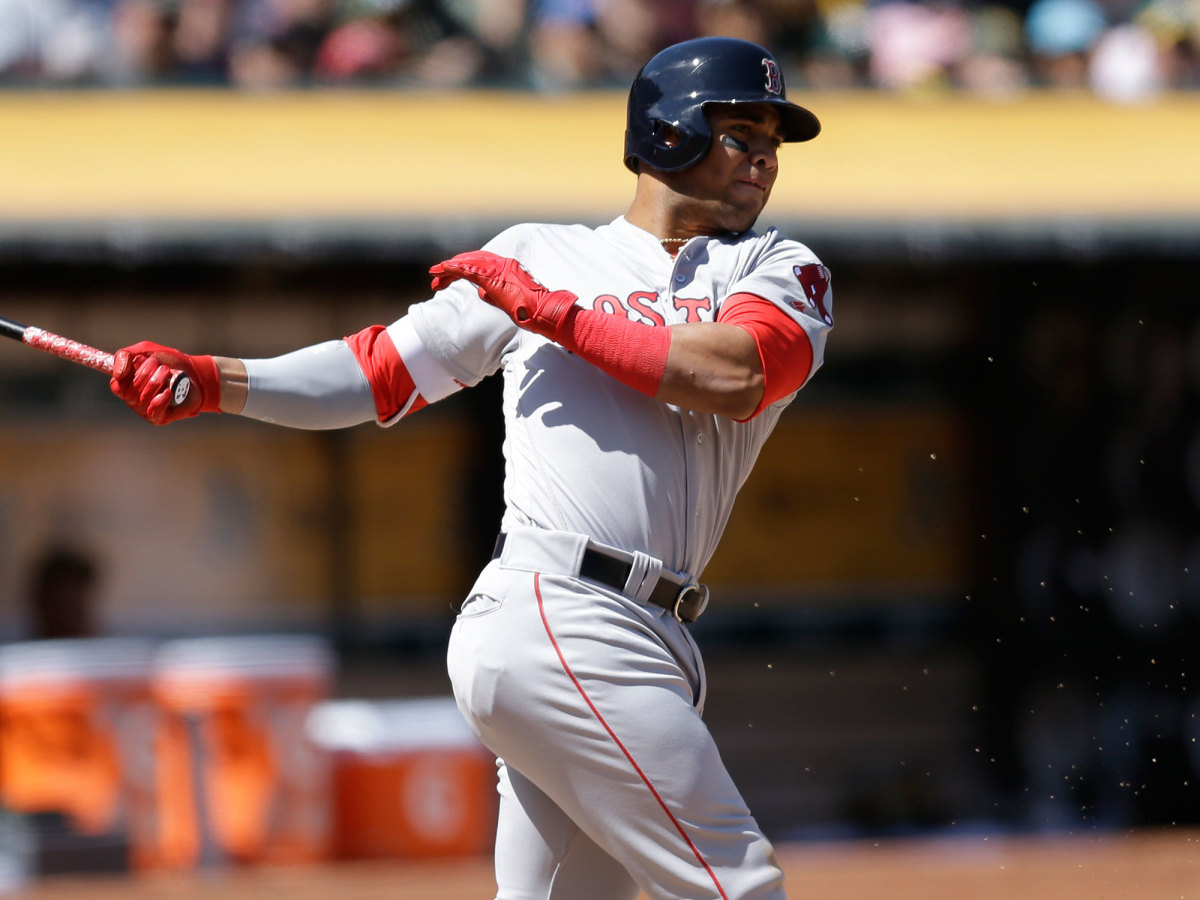Red Sox, White Sox combine for interesting risk-reward with Chris Sale trade

When it is said that something is priceless, it doesn't really mean that there exists no sum at which it can be bought. It means that the asset is so rare that it is virtually incomparable, so while one can imagine its price to be extraordinarily high there is no real way of precisely determining how exorbitant it might turn out to be.
Such was the case with Chris Sale—before Tuesday, anyway. The 27-year-old lefthander, a perennial AL Cy Young candidate for the White Sox, seemed a priceless commodity for four main reasons. The first was the five-year extension he signed with Chicago in 2013 that will pay him a total of $38.5 million over the next three years; based on current WAR exchange rates of approximately $8 million per win above replacement, he's making about one-third of what he is worth.
The second was the sorry state of a free agent market in which there was no starting pitcher approaching Sale's quality. The market is so weak that its top option was a soon-to-be 37-year-old, Rich Hill, who is a decade removed from the last time he exceeded 110 innings in a season. On Monday the Dodgers signed Hill to a three-year deal that will pay him an average of $16 million a season—significantly more than will be earned over that period by Sale, a five-time All-Star who has averaged 203 innings pitched over the past five years and, by the way, is nine years younger.
The third reason reason is how incomparable Sale is, both in style and performance. He is a lanky lefty who uses his 6’6” height, upper-90s heat, cyclonic windup and sidearm delivery to fool hitters who have no way of preparing to face someone like him, because there is no one else like him. Of pitchers who appeared in each of the past five seasons, only Clayton Kershaw, Johnny Cueto, Zack Greinke and Madison Bumgarner had cumulative ERAs better than Sale's 3.04—which he achieved while pitching in a bandbox of a park on the South Side of Chicago and in front of some dreadful defenses. Only Max Scherzer and Kershaw whiffed more than the 1,133 batters Sale did.

The fourth reason is even harder to quantify, but no less real: sentimental value. For many years, when the White Sox’ front office imagined its franchise’s future, it included Sale raising a World Series trophy over his head with his long, skinny arms. To part with him would mean resetting the franchise’s very identity, which is a difficult thing with which to come to terms. As Chicago general manager Rick Hahn told me earlier this year, “While we have the benefit of Chris Sale in his prime, we gotta find a way to get him into the postseason.”
That was back in May, when, after another offseason of retooling, the playoffs seemed a realistic goal for the White Sox. They were 23-10 and already had a six game lead in the AL Central. Though early, that would prove to be the high point of their 2016 season. Chicago went 55-74 the rest of the way, and a fourth straight losing season convinced the front office that the team needed more than a modest retooling. What seemed unthinkable in May became reality seven months later, early on Tuesday afternoon, when the White Sox sent their ace to the Red Sox. The price was high, but real: a quartet of highly regarded prospects, including a couple who rank among the best in baseball, in infielder Yoan Moncada (No. 1 on MLB.com’s Top 100 prospects list) and fireballing pitcher Michael Kopech (No. 30). Outfielder Luis Basabe and pitcher Victor Diaz are less highly-regarded but are also considered promising.
It is only Dec. 6, but this winter already has its biggest news. Unless the Nationals trade Bryce Harper or the Angels deal Mike Trout, there won’t be a more staggering transaction, because there can’t be.
How White Sox ace Chris Sale learned to do more (and be better) with less
Like most blockbusters, the Sale trade both delights and hurts each side. Though Hahn said that he’d been talking to his Red Sox counterpart Dave Dombrowki about Sale for a year, on Tuesday Chicago’s future changed in the blink of an eye—from one centered on Sale (and several other veteran teammates, like third baseman Todd Frazier and closer David Robertson, who are now also likely to be dealt) to one in which postseason contention is now several seasons away. Moncada and Kopech are beloved by all talent evaluators, and will conceivably be controlled by the White Sox for a combined 12 future major league seasons against Sale’s three. But now they must actually make good on their promise, which is never a sure thing, particularly because they must now do it under the intense spotlight that will shine on them as a result of having been involved in this deal.
In fact, Dombrowski has made his reputation, in part, by leveraging rivals’ overvaluing of prospects relative to mature performers. As the Tigers GM in 2007, he sent six prospects to the Marlins for slugger Miguel Cabrera and pitcher Dontrelle Willis. During the World Series, one of those prospects reflected on the deal, which ended up a clear win from which Detroit continues to benefit. “There’s a lot of expectations that are added when you get traded that young,” said the former prospect. “Maybe you’re good, but your name was never in the paper before because you’d never been traded. And it’s not automatic that if you’re a top five prospect, you’re going to have a successful career.” That player was Andrew Miller. He is now a shutdown reliever for the Indians, but he bombed out in Florida before finding his first taste of big league stardom in 2013, six years after the Cabrera deal. Moncada and Kopech could well become generational stars—but there are many other possible outcomes, as well.

The Red Sox have many reasons to feel good about a deal that allows them to add an ace while retaining every piece of their young big league core, which includes outfielders Andrew Benintendi, Mookie Betts and Jackie Bradley Jr, and shortstop Xander Bogaerts. Sale does have some baggage: He made national news for two embarrassing reasons this past year, first for flipping out at White Sox' management about the team's attempts to limit the clubhouse access of the 14-year-old son of his friend Adam LaRoche (which led to LaRoche’s retirement) and then, in July, for drawing a suspension from the team after he destroyed throwback jerseys whose cut, he felt, hindered the club’s performance. Sale is, clearly, a passionate person, but with a few notable exceptions his intensity is almost always channeled productively. There is no question he will be deeply missed in Chicago and welcomed in Boston.
Hill, pitcher Dodgers had to have, earns long-awaited riches with three-year contract
More of a question, though, is his longevity. There is now an awful lot riding on elbow of a single lanky lefty. While he has yet to suffer a major injury, the risk of one always lingers, especially with his one-of-a-kind wind-up. And while he sought to pitch to contact more this season than in the past in order to improve his durability (as I detailed early last season in a SPORTS ILLUSTRATED feature) it’s hard to know how many years away he is from a time in which a decrease in his velocity doesn't happen by choice. That, too, is impossible to predict, because, as we have noted, there has been no one else like him who might have set a precedent.
Still, without risk there is no reward, and on Tuesday both sides accepted a large serving of the former in search of the latter. They also pulled off one of those deals that will always be known in shorthand—the Chris Sale Trade. It is one that will be judged retroactively for at least the next decade; and one that will be remembered forever.
